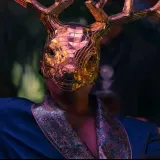Case File #004 - The Hinterkaifeck Murders: Germany’s Oldest Unsolved Family Massacre
CASE ID: DE-HKF-1922
DATE LOGGED: March 31, 1922
LOCATION: Hinterkaifeck Farmstead, Bavaria, Germany
STATUS: UNSOLVED
VICTIMS: 6 Confirmed
WEAPON: Pickaxe / Mattock
🧩 Chapter 1: A Farm Shrouded in Silence
In the quiet Bavarian countryside, nestled between the towns of Ingolstadt and Schrobenhausen, stood a small, isolated farm known as Hinterkaifeck. Owned by 63-year-old Andreas Gruber and his family, the homestead was self-sufficient and disconnected — both literally and socially — from the surrounding communities.
On March 31st, 1922, all six residents of the farm — Andreas, his wife Cäzilia, their widowed daughter Viktoria, her two children (Cäzilia Jr., age 7, and Josef, age 2), and the new maid Maria Baumgartner — were murdered.
The bodies were not found for four days.
🪓 Chapter 2: The Killings
The killer began with the barn.
One by one, the family members were lured into the barn — likely by noise or staged disturbances. Andreas, Cäzilia Sr., Viktoria, and young Cäzilia were each bludgeoned with a mattock, a type of pickaxe. The killer then entered the house, where he murdered Maria, the maid, in her bed, and Josef, who was asleep in his crib.
When police arrived on April 4th, what they found was haunting:
- The bodies in the barn were carefully stacked and partially covered with hay.
- Josef’s body was covered with one of Viktoria’s dresses.
- All victims died from massive cranial trauma — the kind consistent with a farm tool, not a gun.
- The family dog was alive but agitated and chained up inside.
- Meals had been eaten. The livestock had been fed. The chimney had fresh ash.
The murderer had stayed on the property — tending the animals, eating the family’s food, and possibly even sleeping in their beds.
📎 Chapter 3: The Clues That Went Nowhere
Even before the murders, things had been strange.
- Footprints in the snow were found leading toward the farm — but none leading out.
- Andreas had reported finding a newspaper on the property that didn’t belong to them.
- Their house keys went missing days earlier.
- The prior maid had quit six months before, claiming the house was “haunted.”
- The family had complained of hearing footsteps in the attic, but nothing was found.
And yet, none of these warnings triggered an investigation. Locals chalked it up to paranoia. Then came the blood.
📂 Chapter 4: The Investigation
Hundreds were interviewed. Dozens were suspected. None were charged.
Some key theories included:
- Lorenz Schlittenbauer, a neighbor and former lover of Viktoria. He knew the farm layout and was the first to arrive at the crime scene.
- Incest allegations between Andreas and Viktoria gave rise to revenge theories.
- A vagrant or soldier, passing through the region.
- A farmhand, dismissed months earlier under mysterious terms.
No definitive evidence pointed to any one person. The murder weapon was found in 1923 — buried in the attic.
In 2007, German forensic students re-examined the case using modern profiling. They concluded that the killer was likely someone close to the family — but refused to name a suspect due to “respect for surviving relatives.”
🕳 Chapter 5: The Creepiest Detail
Young Cäzilia Jr. had chunks of her hair ripped out.
Forensics indicated she did not die instantly. She likely witnessed the killings and spent hours alive and terrified next to the bodies before succumbing to her injuries.
The family’s clock had stopped at 2:30 AM.
📁 Evidence Summary:
- Weapon: Mattock (discovered in attic, 1923)
- Footprints: One set, in — none out
- Motive: Unknown
- Timeline: March 31st murder / April 4th discovery
- Scene: Farm lived-in after murders
- Case status: Open but cold
References
All sources used in this case are listed in the References Archive. Each link corresponds to verified data, public records, or expert documentation.

